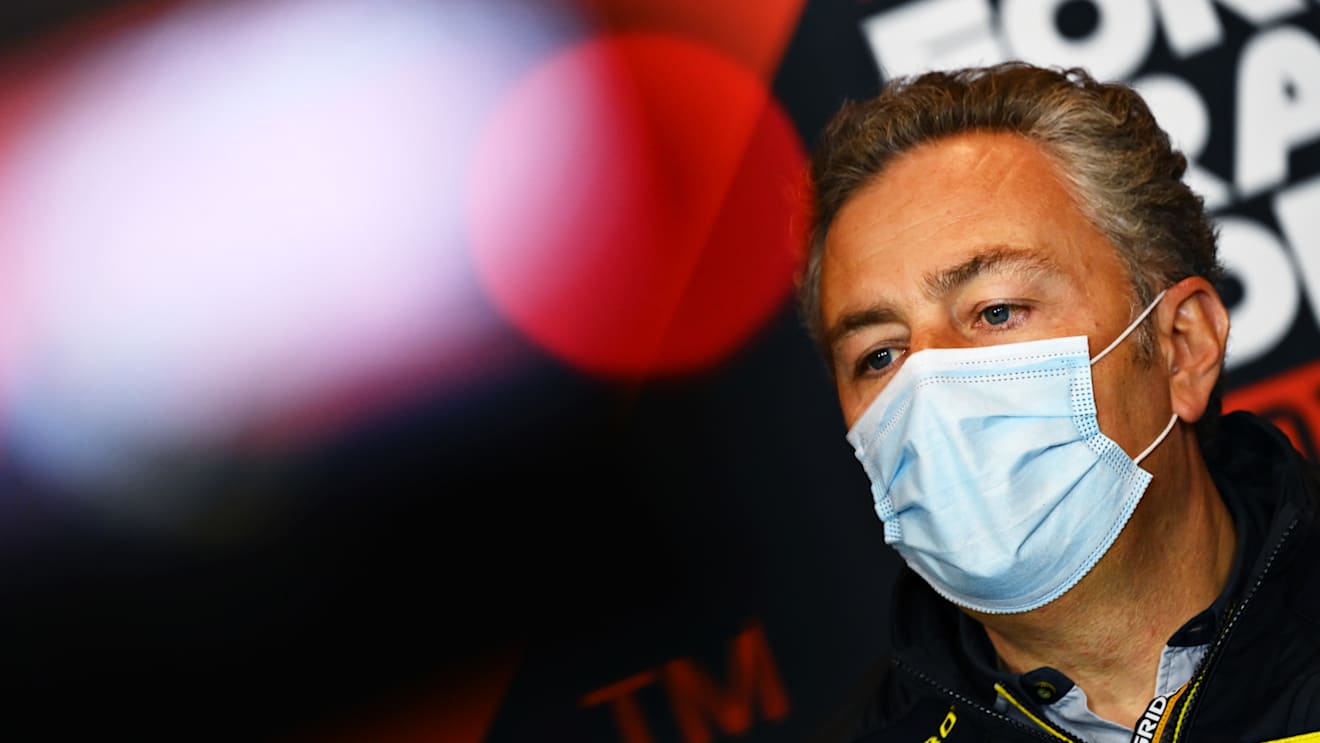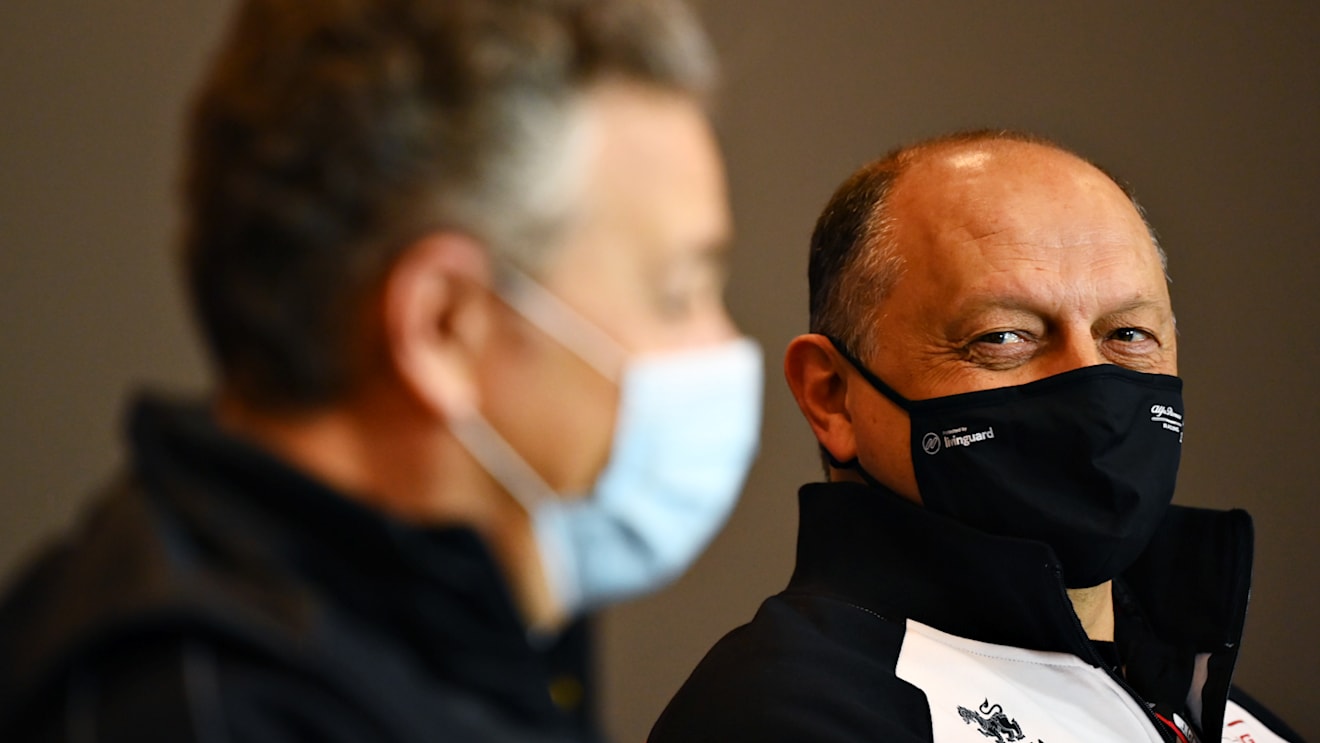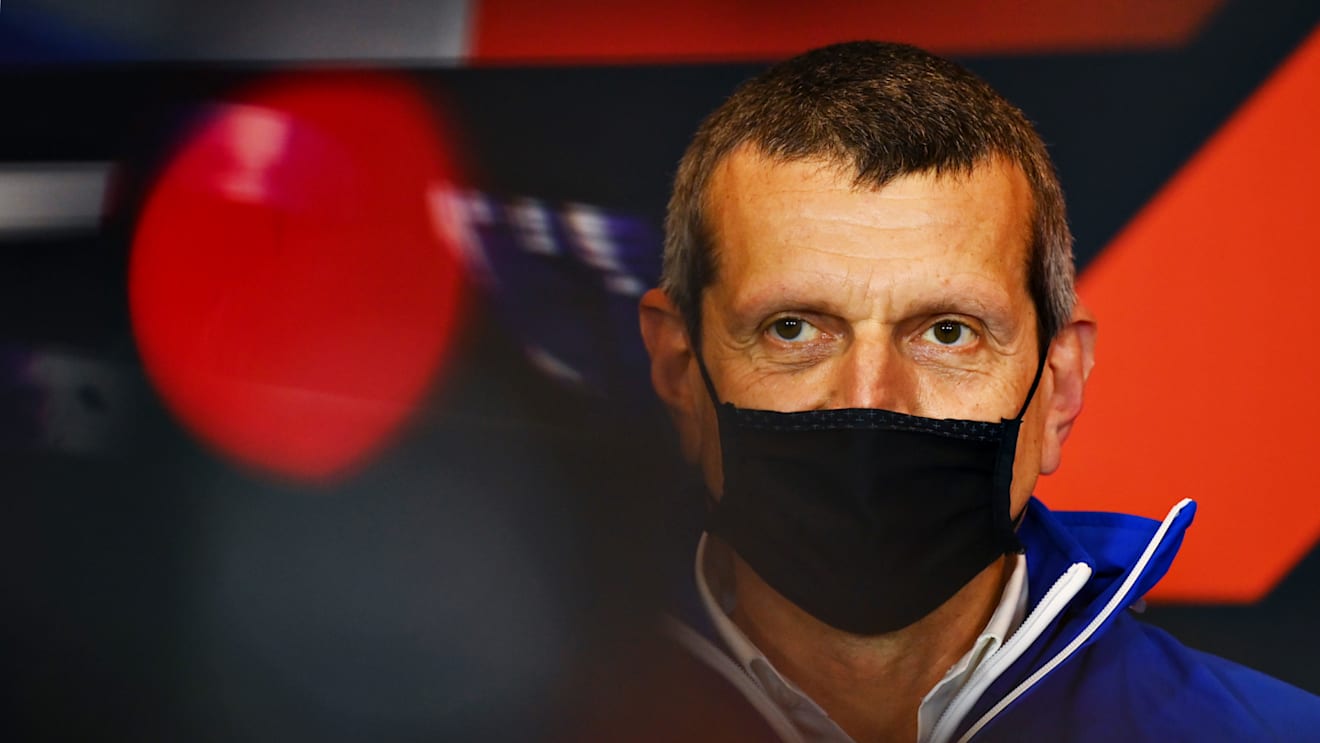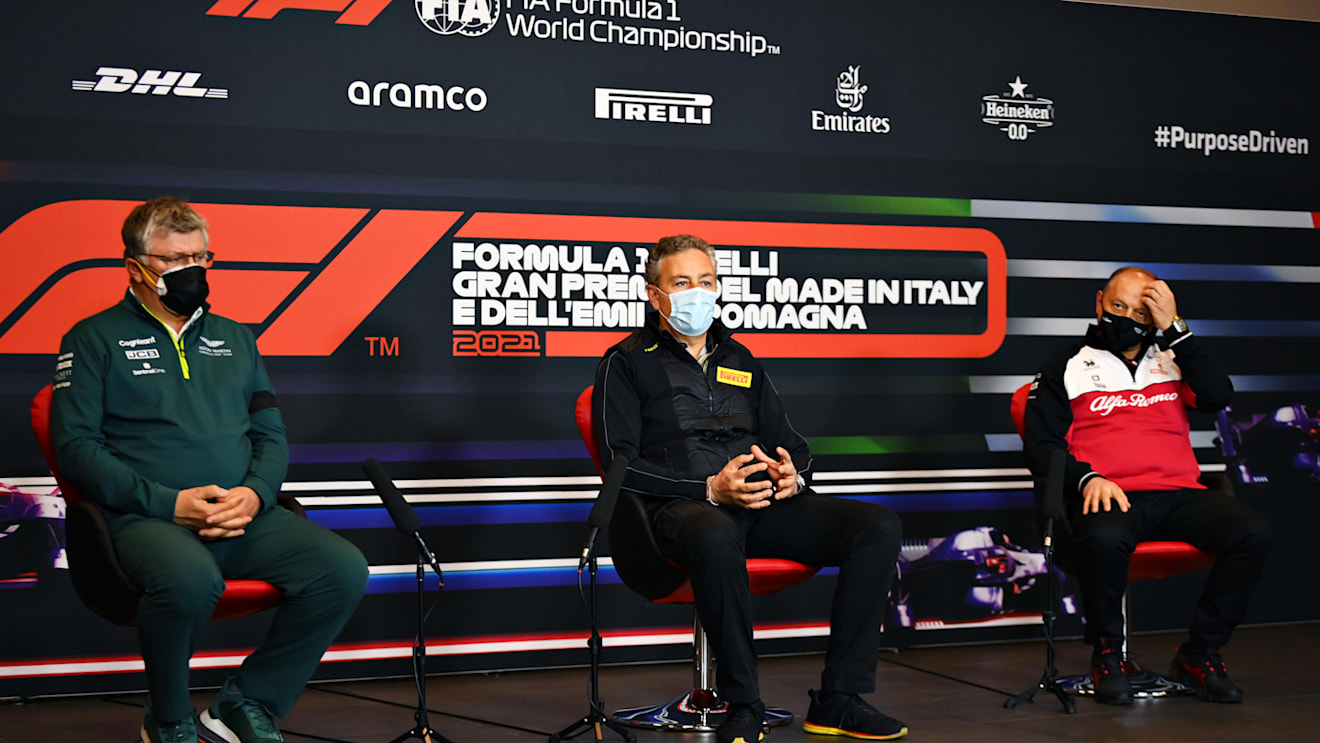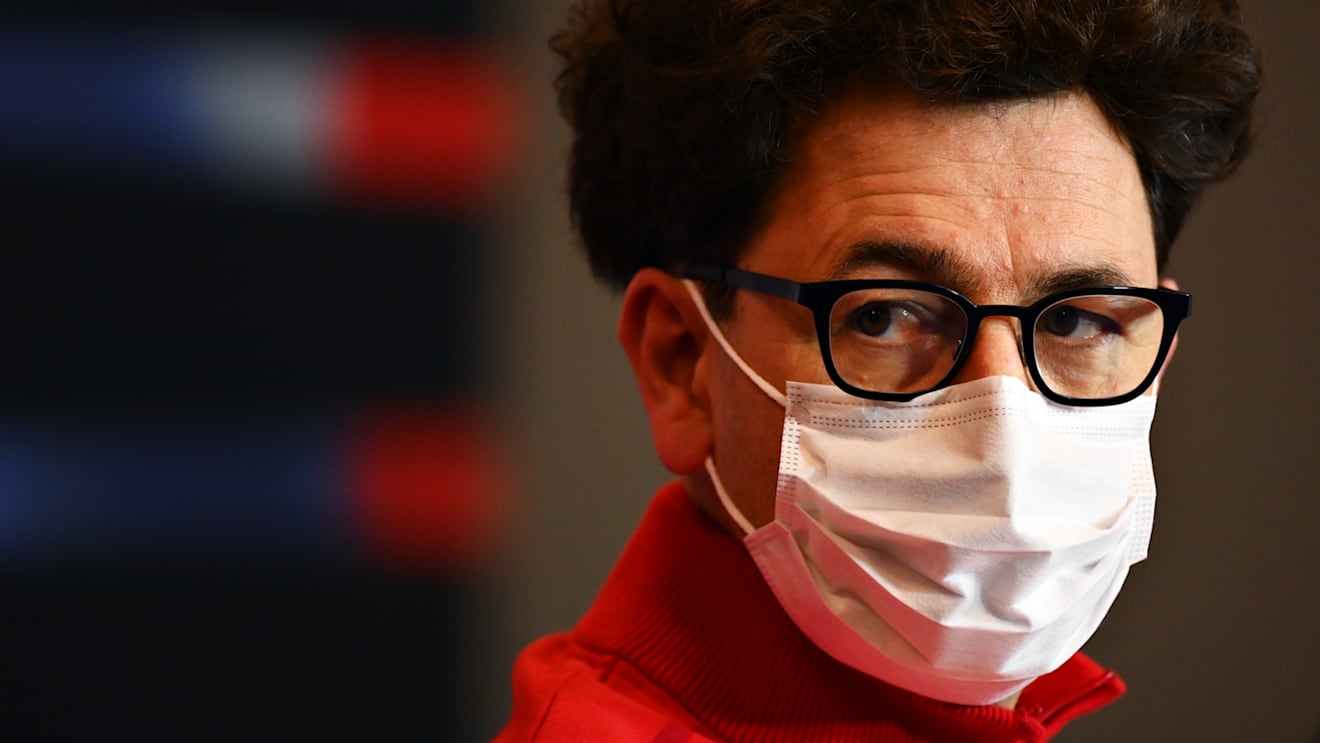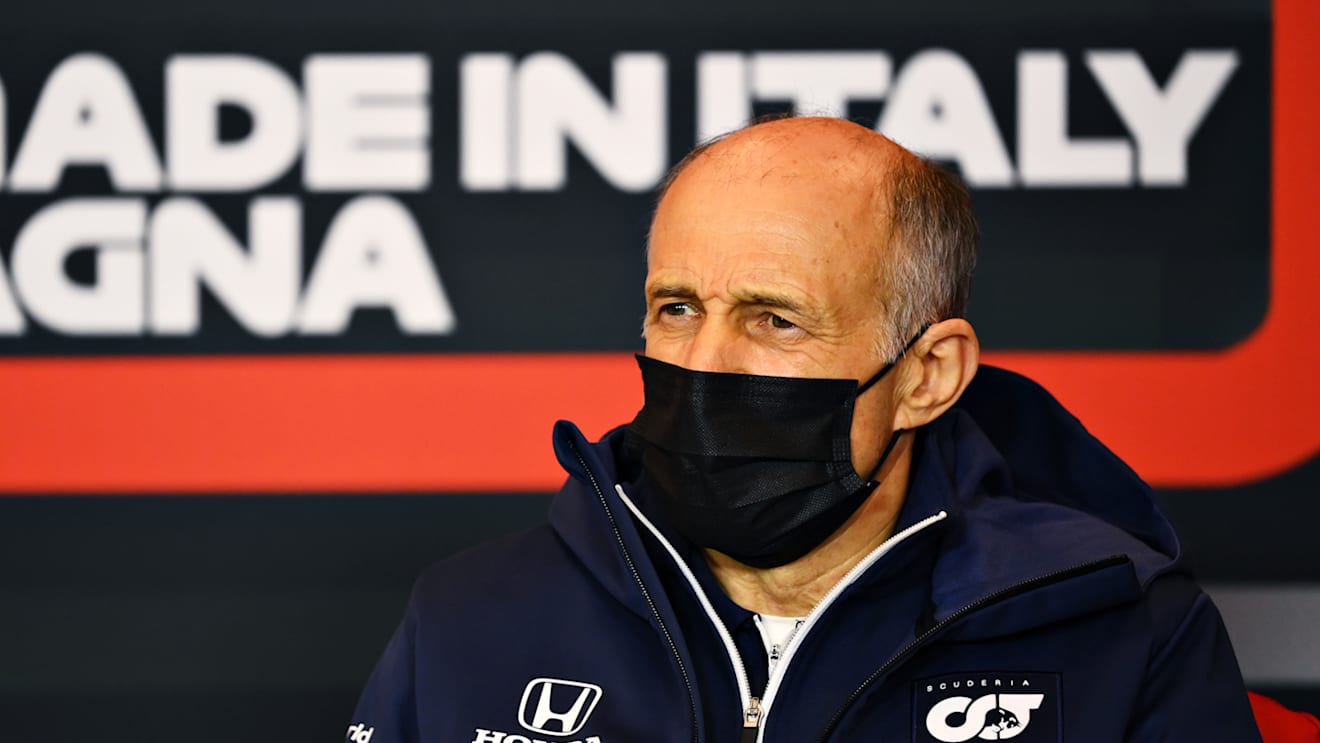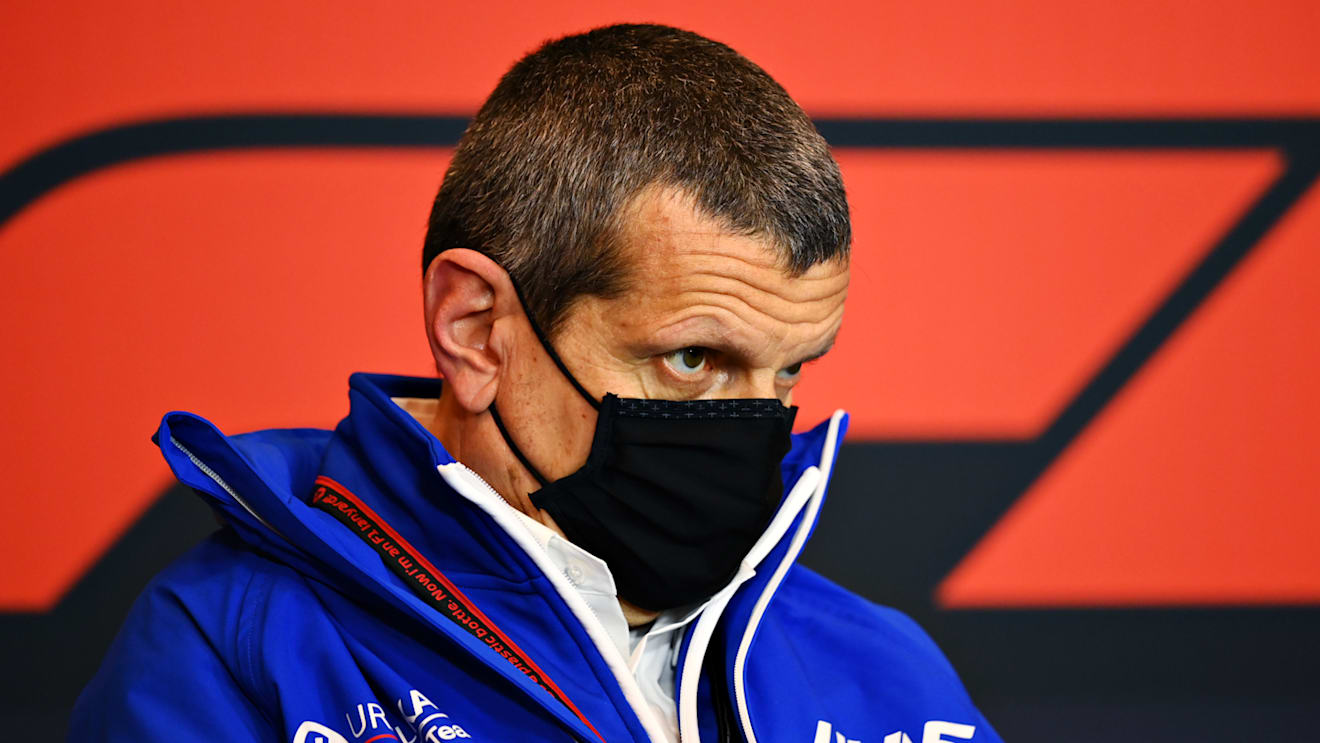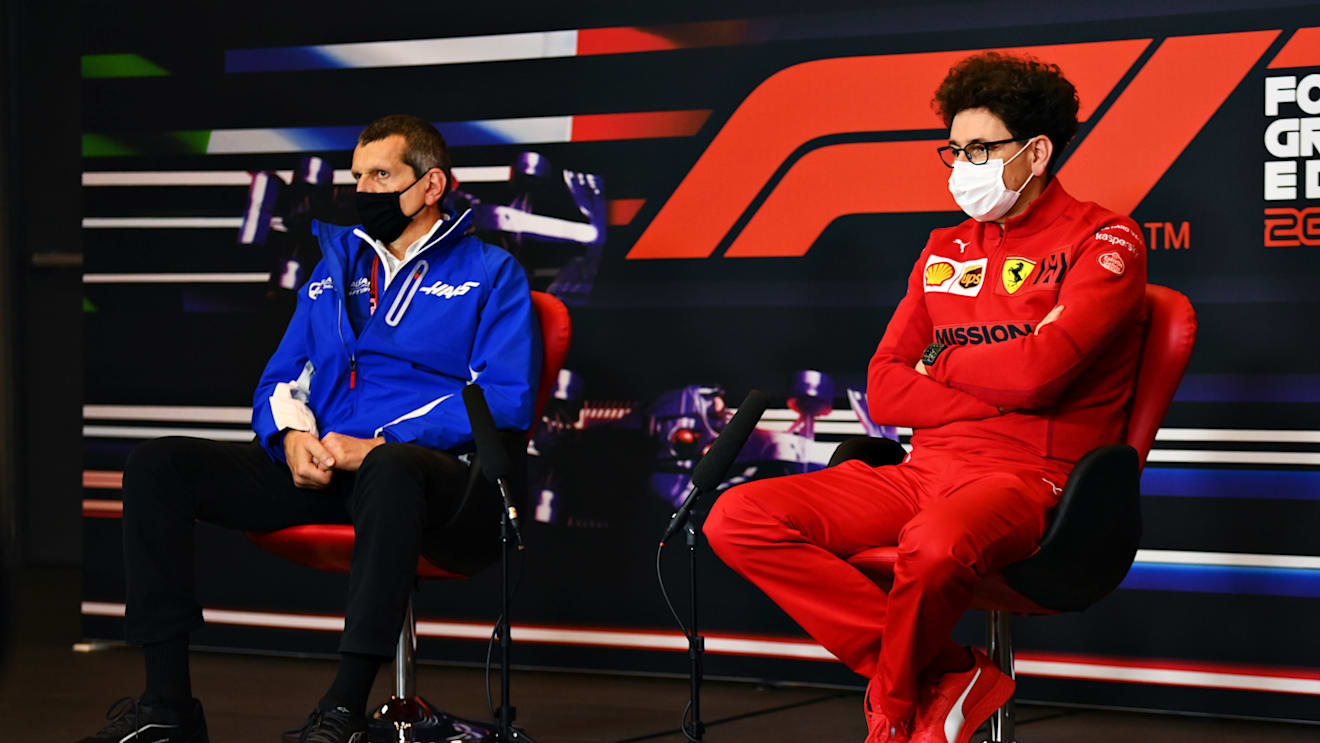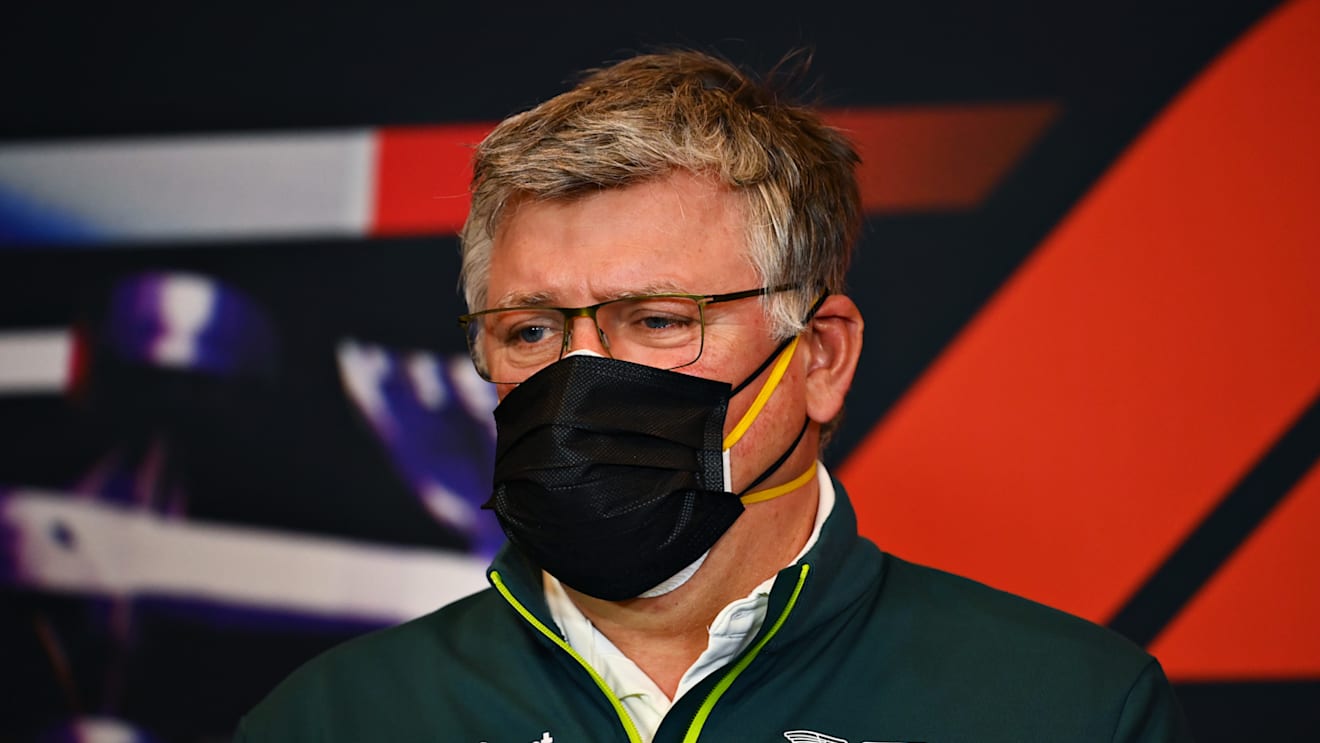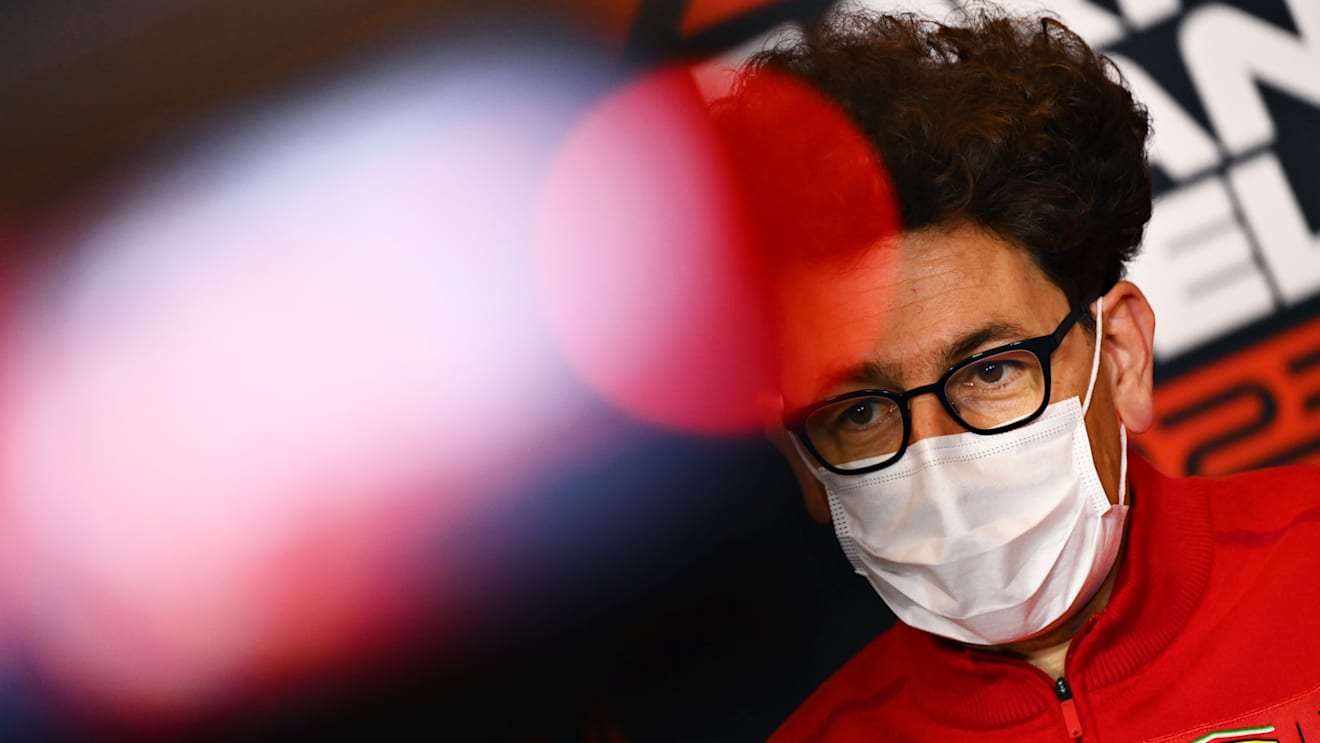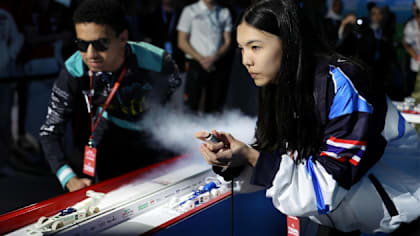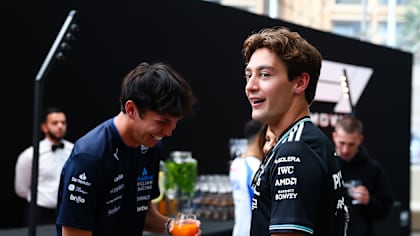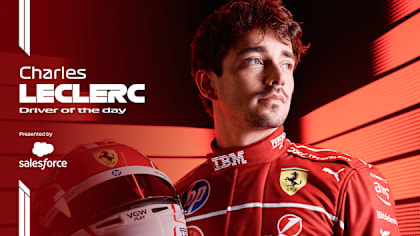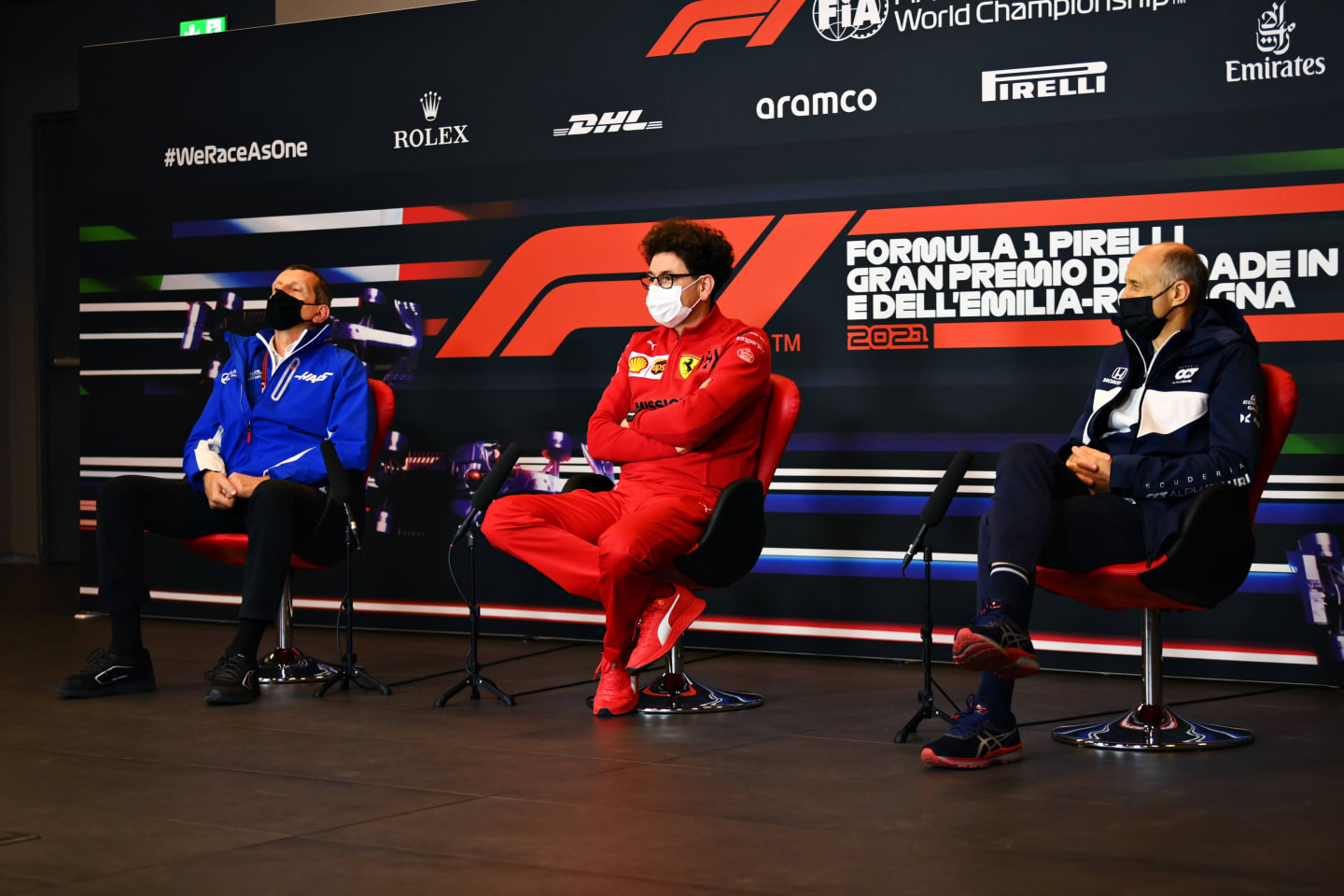
News
FIA Friday press conference - Emilia Romagna
Share

TEAM REPRESENTATIVES - Guenther STEINER (Haas), Mattia BINOTTO (Ferrari), Franz TOST (AlphaTauri)
PART ONE
Q: That was an eventful FP1 so can we start with a résumé from each of you about how it went. Franz, let’s start with you please.
Franz Tost: So far everything went OK, at least with Pierre Gasly. I think we have a competitive package together. Unfortunately with the soft tyres he hit a little bit of traffic, nevertheless, I think he can show a good performance here. With Yuki, we were not so lucky because there was an electronic problem on the power unit – a wiring loom or something like this. I hope that they can sort it out for the second free practice session and that he can do some laps and that we can set-up the car in a proper way that he is prepared for tomorrow for the qualifying and Sunday for the race.
Mattia?
Mattia Binotto: I think, as you said, eventful FP1. The radio was working very badly and when you’ve got something like that it's very difficult because you’re not managing communications with the drivers. On top of that, Charles has small issues with some power unit activations that we are trying to address. Nothing major but still it somehow makes the sessions more difficult. Carlos got a more, let me say, complete programme. First, on the hard tyres then moving onto the softer. I think overall he was collecting data as usual in FP1. I think to assess the performance? Very difficult again. I think in FP1, too early a stage. More important for us to stay focused on the car, on the set-up, on the balance, preparing ourselves for quali and then the race. But overall, I think good start to the event, the start of the weekend but still I think much to do. FP2, again, will be important. Now the sessions are only an hour it makes things a lot more dense – but I think an interesting session for us.
Guenther?
Guenther Steiner: As Mattia says, a very interesting session and I think having the session only one hour helps. All the cars are out, quite a lot for the spectators. I quite like that. And obviously with the data and the radio not working in the beginning properly, it was, for our two young guys, quite exciting, you know? Not having contact with the pits, they’re not used to it. They did OK, getting around it – but getting a bit confused. They’ve learned that one now, so they’ve done this one, they are through that one. Nikita on his last lap, he made good improvements time-wise, learning. Mick was trying to go step-by-step and then in the end there was traffic because the red flag that then, in the end, everyone came out together but Nikita improved pretty good on his run on the soft tyres. And then, on the last corner, he got into the gravel and spun-out. I think the car is not damaged too badly, so we will be ready for FP2. It’s actually, all-in-all, for the excitement, it was a good session – as much as it doesn’t look like – but I think they learned a lot in that hour.
Q: Guenther, you say the team and the drivers learned a lot in FP1. Can we take it back first of all to the Bahrain Grand Prix. It was a tough weekend for your rookies. Can you just describe the debrief after the race?
GS: I think there was… it wasn’t… Nikita obviously didn’t do a lot of racing. He went off on lap one so there was not a lot to be said about that – but otherwise I think Mick made good improvements during the race. Each set of tyres; he improved. He managed them better and better and his times were better and better. For us, for a first race weekend with two rookie drivers, it wasn’t bad. Actually, we are learning and that is what I am always saying, this year is here to learn. And obviously learning comes with pain. The pain is normally a damaged car. At some stage, we need to stop to do that. At the moment we just try to go through it and teach them as much as possible so we get better and hopefully in the future have got a better car.
Q: As you say, Nikita didn’t do much racing. Just how difficult was it for him to move on from that race? What did you say to him?
GS: What I said to him? I said you need to keep your head high, you know? These things happen and obviously in the moment he’s the beat-up boy, you know? Everybody beats up on him. That makes it tougher. In the end you come out on the better side – but you just need to keep your head up, focus on your next race and keep on going. That’s what he did and he was here today, yesterday he was in a good place and today he’s in a good place at the debrief, even if he spun out because he sees he’s improving and he’s learning. So, that’s what he has to do. That’s the only thing he can do in this situation – just keep on going, knowing that things went wrong but that he can do better.
Q: And how much do his spins this morning worry you, given what happened in Bahrain?
GS: How much do they worry me? At some stage they need to be reduced but he’s trying very hard and I guess he’s trying sometimes a little bit too hard – but he needs to find that limit but it’s for him to find, not us. We can help him doing that but it’s one of those things, as I’ve said before, learning is painful, you know? It comes with pain. At some stage that will hopefully stop and they will be in a good place.
Q: Franz, a frustrating season-opener for you guys in Bahrain but there must have been lots of positives to take away from the race as well?
FT: Frustrating was only the result – because we had a competitive car and Pierre, I think, could easily have finished in fifth position, but unfortunately he was involved in this incident where he lost the front wing. And you know, that’s part of the game, this can happen. Yuki did a very good race, because we said to him before the race that he should not risk anything. He should do as many laps as possible, to learn, to get experience, and this is what he did, and he showed some very good overtaking manoeuvres and, I must say, it was a fantastic race from his side.
Q: Now, how good is this year’s car?
FT: This we will see. Bahrain was the first race, today we are here in Imola – but it seems that the car is quite competitive from the chassis side. I think that, especially from the aerodynamic side, the team in Bicester has done a really good job. But also on the power unit, Honda, during the winter months, improved a lot. This new engine has a lot of power and therefore I am quite optimistic for this season. We have two fast drivers. Pierre is experienced. He’s now in his fourth season and you can see this, how he is going out. When you saw this session in the morning, you can only achieve this if you have a lot of experience. And Yuki is the newcomer, the rookie, but he is very fast, he is a really high-skilled driver and I expect that we will have a successful season.
Q: Is this the most competitive car you’ve had since… when… since 2008 perhaps?
FT: Between 2008 and 2021 we had competitive cars. Let me say it in this way. During these years, everything has been developed from the design office, production, the vehicle performance group improved a lot, the engineering at the race track has become much better and the engineers are much more experienced now and, as I mentioned before, especially the aerodynamic department. I think we made a big step forward. The complete team developed in the last years and this is the result. Because, if you want to be successful in Formula 1, it’s not only one parcel, it’s everything together. I think that currently we are in quite a good shape in all the different areas and that’s decisive to be competitive, and to be in the front part of this midfield.
Q: Mattia, coming to you. From Ferrari’s perspective, what have been the take-home messages from these opening weeks of the season?
MB: Coming to Bahrain, the first race of the season last year, we were performing very badly there, both on the straights and in cornering – very slow in quali and in the race. So certainly for us it was an important, let me say, test. And I think the car, somehow, progressed well. As well if we compare to our competitors. I think we made good progress. That was not easy in a situation where most of the car was frozen, per regulations. I think the power unit made a good step forward. I think that today on the straights we are certainly not lacking the speed as it was in the past. And I think that, as well, the car is behaving well, and I think that was the most important. Certainly the debriefing, post-race was very long, that’s normal at the very start of the season because, together with the drivers, we need to understand the car behaviours, the main limitations, how me way improve and I think addressing somehow any developments we can do during the season. I think we learned from Bahrain that our race pace was not as competitive as the quali. I think we’ve been better in quali compared to the race itself. That’s for many reasons but certainly reasons that we tried to analyse. I think in the tyre management… in Bahrain it is very hot conditions, very different to the one of Imola, where you need to manage the overheating, especially on the rear. I think again here, coming now to Imola, it’s important for us to evaluate the car behaviours in different conditions and make sure that somehow the progress we’ve seen are confirmed, I think that will be the key point for the Imola Grand Prix.
Q: And after the frustrations of last season, how much of a relief is the performance you’ve found over the winter?
MB: I think that the relief is to see that we are developing in the right directions. I think it is important to see that simulations, wind tunnel, at track now are correlating certainly better than what it was in the past, and that gives confidence in the tools, and our design capacity for the future. That, I think, was the most important and I think in that respect it is a relief. And certainly, the fact that the car is performing better, so that we can have a better result at the end of the race weekend, is important. We often said that our performance of last year was not somehow acceptable for a Ferrari brand, so we knew that these areas are important for us still, showing developments in all the areas. So again, I think the performance is certainly a relief.
VIDEO CONFERENCE
Q: (Scott Mitchell – The Race) Question for Guenther please. Guenther, you talked about Nikita’s mistakes and obviously they’re both rookie drivers so there is going to be a lot of learning. It must be quite difficult to manage – because I guess you can’t put a specific number of when mistakes become too common, like this many mistakes becomes too much of a problem. How exactly do you manage that? I guess externally it looks like the issue is, because it happened so often through the Bahrain weekend in every session, and now it’s happened here, there is a bit of a worrying trend emerging.
GS: As you say, to put a number on it is impossible. It's not only difficult it is impossible. In Bahrain I would say what they had to learn is also the wind conditions in Bahrain were very rough and our car was already last year very bad in windy conditions, so just to understand that, it cost us a few spins – and Mick had one in the race as well. Obviously we are not planning to spin the car but on the other side, it’s part of it, of the learning. So, I don’t want to put a number or time on anything. This will sort itself out, in my opinion.
Q: (Julien Billiotte – AutoHebdo) Question to Guenther, about Nikita as well. Would you agree that the transition between Formula 2 and Formula 1 is proving more complicated for him at the moment than expected? How much do you think the short winter you guys had has hurt his preparations. And also, we know that he tested extensively with Mercedes. Do you think it has given him too much confidence at the wheel of an F1 car?
GS: No, I think we jump to conclusions too early. I mean we are now at the second FP1 this season. So now, to judge somebody on this, it’s a little bit early – but for sure Bahrain, he had a few spins and, as you say, maybe F2 to F1 is still a difficult step. I don’t know. Bahrain was very difficult conditions as well, as I just said before to Scott – but at the end, I put it down to learning. It’s like him driving the Mercedes last year. I think he learned something but also he has to learn that our car is not as good as a Mercedes. I’m very open about that one. I’m not trying to hide that for sure the Mercedes is a little bit less temperamental than our car, so, again, I can just repeat, we are here, we have got the whole year to learn, we haven’t got the whole year to spin but we are here, that is what we are trying to do this year.
Q: (Lewis Larkham – Crash.net) Franz, what impressed you the most about Yuki’s debut in Bahrain and how do you view him compared to other talents you’ve had at the team in the past?
FT: You know there are many parallels to other drivers that we had in the Red Bull driver pool. First of all they are all talented, otherwise they wouldn’t be in the pool. For second, they are focused and they are orientated and disciplined just to perform well. What impresses me about Yuki is that he is learning quite fast. He is very strong under braking. He has real good car control and he gives already quite a good feedback about the behaviour of the car and helps the engineers in setting up the car and this is not so usual for someone who is coming directly from Formula 2. Therefore in Bahrain, I must say that all weekend he did a good job and I hope that we can provide him here with a car that is reliable because I am convinced that tomorrow he can do a qualifying three. And this is the target.
Q: Mattia, Carlos Sainz is not new to F1 but he is new to Ferrari. What has surprised you about him?
MB: I think that Carlos is a very experienced driver, first. And when I’m saying driver, it’s not only his capacity of driving, giving feedback, it’s his way of integrating within the team. It’s his capacity of communicating with engineers, with the entire team as well, motivating. His hard work – he’s always in Maranello when not at the race weekends and that’s something that is great. I think it’s a big boost for us; it’s fresh air. I think it’s as well important for Charles because I can see that the two are somehow integrating well. They are, I think, pushing themselves and each other, which is very positive, not only at the racetrack but back at home, playing paddle, at the simulators, playing chess, whatever they are doing. I think it is a very positive experience. Overall it is the spirit. I think he is very fast as well, but that is not a surprise. He is very fast certainly in the race but he can be very fast in quali but I think we saw that by looking at the last years and we know that somehow he’s a good driver. But I think really the spirit and the way he is dealing with the whole team.
Q: (Jon McEvoy – Daily Mail) In the latest edition of Business F1 magazine it said that there were 227 swear words in the latest Netflix series. In light of that I just wonder whether some of those who are most swear might not swear so much in the next series or maybe they’ll argue that it is good to sell Formula 1?
GS: That’s a difficult answer. I don’t know how much I’m going to swear this year. I cannot look forward. I don’t plan it normally. As I’ve always said, I’m not an actor so I don’t get a script to do that. I don’t know. I cannot answer that. I have no plans to swear less or little. I don’t know what the future brings.
MB: Apart from swearing or not, I think Netflix is a very positive activity. I think it brought a lot of fans and a lot of interest to F1. I think thanks to Netflix we raised somehow the number of people now being interested in F1. I think overall we have come to the fourth season and each single year it could be better to the previous one and the interest in growing up so I think we can all be very positive and helping the situation by maybe not being actors but bringing interest to the series.
FT: I must say the Netflix is doing a good job. They brought Formula 1 especially to young people and this is quite positive and in the next years there are some other followings coming up and then we will see. It’s positive. Generally speaking it’s positive, everything, and I see it in a good way.
Q: (Andreas Haupt – Auto Motor und Sport) Franz, you mentioned that you have a very competitive car. So is P3 in the Constructors’ Championship within reach for this season and did you already take a decision on when to switch completely to next year’s car in terms of development?
FT: We didn’t talk about P3 in the Constructors’ Championship, at least me not!
MI: P2, no?
GS: P2 you talked about, not P3.
FT: When? Not me! There must be more Franz Tosts running around here. I always said that I am more than happy if we are in the first five. OK, we are working already on next year’s car as all the other teams do as well. We started last year investigating and reading the regulation to find out how next year’s car will be and I assume that up to June or July we will also do some work on this year’s car but of course during the season more and more engineers will swap over to the project for ’22. This of course depends on the performance and which progress we will have during the first half of the year and then it’s a decision from the technical director when to swap to 100% to the ’22 car.
Q: (Ben Hunt – The Sun) With regards to the radio problems, I just wondered how severe they were during that session and indeed if there was a problem communicating with the drivers I just wondered how dangerous that is whether there is a problem or being warned about approaching a slow-moving car or anything like that. I wanted your thoughts on that issue. Is it a big problem and will it be rectified for the next session?
MB: Certainly it was a big problem. I don’t know if in all the teams we had the exactly the same problem but for us it was very difficult, especially on Charles, no way of communicating to him, so we aborted the first run and then as well because we had a small issue as I mentioned before. As you said, it’s difficult because you cannot give him advice on cars following so then there can be impeding situations, which are not voluntary at all. It is very difficult for the drivers as well to know who is coming behind. On top of that we are running our race power units let’s say, because the power units are the ones we fit in Bahrain and are used for the entire weekend. So obviously if you have any problems you don’t know how to react and how to communicate. So those type of problems are serious. Obviously we know that was not voluntary from FOM but hopefully that will addressed and sorted out for FP2 because communicating with drivers from the pits is very important for safety, functionality, reliability, it’s not only performance, it’s making sure that everything is running smoothly.
GS: Everything that Mattia said. I think a little bit lucky also that nobody had radio communication so everybody was watching out to be honest. I think it’s more difficult if you are the only car out there with issues but everybody had issues so everybody was respecting and it was communicated quite quickly that everybody’s radio was not working so everybody knew that nobody could see so even the people which were behind cars knew that the guy in front of him didn’t get advice so that helped a little bit. But it shows how important it is to have this communication. I hope it is back in FP2. I don’t know if it will be back because it’s a general problem and we didn’t get also some of the data we normally get, so hopefully everything is back up and running for FP2.
FT: It was interesting to observe how confused we were because normally you are used to give the driver some advice to tell them, especially at the beginning of the free practice session, what to do and also regarding the traffic. But drivers couldn’t hear us, we couldn’t hear drivers and it was completely a new situation and no one was prepared for this and I hope for the second session that they can sort it out because it’s not so easy and we were lucky that nothing happened.
Q: (Julien Billiotte – AutoHebdo) Franz, coming back to the step from Formula 2 and Formula 1, since you also have a rookie in your team, do you think we tend to minimise the performance gap and need to adjust, because drivers are so well prepared these days. How difficult is it to graduate to grand prix racing in 2021?
FT: I don’t think it’s so difficult. It depends always on the driver. It depends on his skills. It depends on how much time you have and he takes to prepare that driver for Formula 1 and we had with Yuki Tsunoda we had quite an intensive winter testing programme – not only on the track but also in the factory when he was there. Thanks to Coronavirus he was not allowed to go to England and therefore he spent a lot of time with his engineers and I think this helped a lot. I must also say that the drivers that are coming up now from Formula 3, Formula 2, they are really well prepared – especially from the driving side. Why? Because most of them start with racing at six or seven years old in karting and then they do 10 years karting and then they have Formula 4 for one or two years and then Formula 3 and Formula 2 and that means they have a lot of race experience already and the speed in Formula 1 they get adapted quite soon with this. I don’t this is a major problem. And then it depends on how skilled the driver is, how deep is the ingredient from the learning curve and how motivated and disciplined he is to get forward.
Q: (Scott Mitchell – The Race) To go back to the lack of data in FP1. I know you all talked about how you reacted to it and what it meant, but I just wondered if you could clarify what exactly you lost and what the cause was?
GS: The radio was very… we could hear the driver, but he couldn’t hear is, except in one corner, he could hear us. Then we didn’t have any GPS data in the beginning, we didn’t have any tyre information from the other cars and we didn’t have any timing in the beginning. Some of the timing came back and that was about it. We tried with…. Instead of the radio we used the good old style pit board, we tried to do that one and that’s the only thing you can do.
MB: I don’t there is much to add. As he said, the pit board then was very important and useful. We got our telemetry data and that was certainly the most important, the one we can analyse now from one session to the others. We got our lap times from telemetry and all the analysis, which is required. But to manage real time this morning was certainly difficult and you may start to imagine how it was at the time when the radio was not there. As Franz said it was interesting to see but difficult to manage.
FT: Nothing to add.
1 / 10
TEAM REPRESENTATIVES - Otmar Szafnauer (Aston Martin), Mario Isola (Pirelli) and Frederic Vasseur (Alfa Romeo)
PART TWO
Q: That was an exciting and eventful first practice session of the weekend, so why don’t we just sum it all up from each of you. Otmar, could we start with you please?
Otmar Szafnauer: Well, it’s early days. We got some good running in when we didn’t have red flag incidents. We got most of our programme done, evaluating some new downforce levels here, some new parts that we brought and it looks promising.
Mario Isola: No surprises. Tyre behaviour as expected. We had some small graining on the C4 which, in these conditions, is quite normal. For the rest, if it stays cool as it is now, the harder tyre is a bit difficult for this circuit here but nothing else. As Otmar said, with the red flag, it was even more difficult to judge the behaviour.
Q: Any warm-up issues in the cooler conditions?
MI: It’s possible for the hard compound, for sure. That means that the medium is clearly the race tyre then it will be interesting to see if these guys can manage the front graining this afternoon for qualifying, because it is clearly the decision for Q2, to go through Q2 with the medium or the soft, depending on how they can manage the soft.
Frederic Vasseur: We are at the early stages of the weekend, that it was not an easy session. We are almost blind in the first part and we’ve no data, and then we had two red flags and the conditions were a bit extreme in terms of track temperature but let’s see this afternoon. I think everyone will react and we will come back to the normal situation.
Q: Fred, if we can stay with you, on the evidence of Bahrain, you guys have made a decent step forwards this year. Can you just talk to us about the step? Where has it come from, how much of it is motor, how much of it is the car?
FV: First, I think that we don’t have to make any conclusions after one event. We have to do it after a couple of events with different layouts and different track conditions and when you improve, it’s never coming from one pillar. I think we improve a little bit everywhere including the engine, but on the aero I think we did a decent job but the target was to score points and at least on this we failed but for sure we did a decent step forward in terms of performance but the target is to score points.
Q: As you say, we’ve only had one event but how confident are you that the improvement will translate to other tracks, like here at Imola?
FV: I don’t have to be confident or not confident. I’m just trying to do my best every single weekend with the team and I think that we had this kind of approach last year. We did more than a decent step during the season, from the beginning to the end of the season and we again did a good step between the end of 2020 and the beginning of 2021 but we don’t have to be focused on what’s happened before, just to be focused on the next one.
Q: And you talk about the step the car has made – let’s talk about the drivers and Antonio specifically. Where do you feel he has improved over the winter?
FV: Antonio did a good step forward in terms of performance in qualifying between the first year and the second year and last year he again did a step forward in race management. I think that the big difference between the Antonio of 2021 and 2020 is that he did the perfect lap for the car in qualifying and this is a good improvement to be able to put everything together at the right moment of the weekend, but I think it’s coming with confidence in the car and himself and I’m quite confident for Antonio.
Q: Mario, can we throw it back to Bahrain, to start with? How did the new constructions perform there, how happy were you?
MI: I believe it performed as expected. The teams had the opportunity to test the new tyres in Bahrain during the pre-season tests. It was tricky, we had the wind affecting the sessions and it was also difficult during the race because we had Sunday’s temperature was much lower compared to the previous days but they had the opportunity to run the new construction and balance the car. We know that with the new construction there is a bit more understeer. Obviously you had to put that in combination with the changes in technical regulations, so it’s not exactly the same car that they had last year but yeah, Bahrain is tricky for traction, we know that. It’s a normal situation for Bahrain and when it’s very hot, like it was on Friday they had to manage the degradation from the rear a lot but on Sunday it was slightly different but again, coming back to the new construction, it was working quite well. Don’t forget, we have the same compounds, so it was just an upgrade in the construction and there is no difference in the compounds, so we shouldn’t expect a big difference, a big change.
Q: Now Pirelli stayed in Bahrain after the race, because you had your 18 inch tyre test with Alpine. Can you just tell us how it went and what you learned?
MI: Yeah, we had one day with Ferrari and two days with Alpine, all with the race drivers. It was very helpful to confirm what we already saw in the past. We are now in the process of finalising the construction and the profile for the slick tyre and it was good conformation, with both cars. Obviously we are also interested, not only in testing on different circuits but also on different cars because we have new cars that should be representative of next year’s cars but we don’t know until we start next season but again, there is good conformation. We tested some constructions, we have a new baseline for Imola; all in all, I’m happy. Obviously if I look at the targets that have been defined more than one year ago, to have a tyre that is with a wider working range, less weighting, a level of degradation that was agreed so certain characteristics also to listen to the drivers and to make a tyre which is more in line with drivers’ expectations.
Q: Otmar, can we start by talking drivers and Sebastian Vettel in particular, because he was very upbeat in the press conference yesterday, despite him and the team having a difficult opening race in Bahrain? Can you just tell us a little bit about Sebastian and in a way, his first 100 days in office, with the team?
OS: Yes, Sebastian, it’s good to hear he was upbeat, he’s been upbeat with the team, he’s learning who we are and he’s feeling more comfortable by the day. Needs a bit more time in our car. He didn’t have the time that we anticipated that he would over the winter. We only had three days of testing and the day and a half that as assigned to Seb unfortunately we had some reliability issues so the more he drives our car, the more comfortable he’ll be and the quicker he will get up to speed.
Q: Is there one characteristic of the car that he’s struggling with more than Lance, let’s say?
OS: He’s driven different powertrains, so a little bit with driveability but I think we’re on top of that now. Just overall car feel and balance. Lance has driven our car for a few seasons now and he knows exactly what to expect and the way the car behaves is much different than what Seb has been used to, but he’s getting on top of it.
Q: You’ve already said that you’ve got upgrades here this weekend. You tested them in the first practice session. What can we expect from Aston Martin over the rest of this weekend?
OS: Over the rest of this weekend? Well, we still have some more work to do, we’re analysing the information now that we gained from FP1. We’ll make some changes into FP2 and then see how well we can qualify and race.
QUESTIONS FROM THE FLOOR
Q: (Scott Mitchell – The Race) Otmar and Fred: we’ve heard a few people talk about the data issues and the communications issues that arose before the start of FP1, that were there for the whole session. Could you just explain what you experienced and do you know what the cause of it was?
FV: The experience was a bit strange because we had no lap time… we had the data for safety for sure, at least, but we had no data or information also. But as it was just for the first stint, until mid-session, something like this, it was OK for me, it was not a drama but for sure we are not used to it now. We discussed after the session, because the drivers were complaining about the radio and… OK, but 20 years ago, guys, they were able to drive without radio. No, it’s OK.
OS: Until you lose that kind of data, I don’t think you realise how much you rely on it. It was like we were blind on the pit wall and then, like Fred said, even driver communication wasn’t working. It made things much more difficult. Root cause? I don’t know why it happened but hopefully it will be fixed for FP2.
Q: (Andreas Haupt – Auto Motor und Sport) Otmar, did the season-opener make you re-think about the development plans for this season?
OS: Not yet. We planned to develop this car… to continue developing the car and we’re still on that plan. It may make us re-think as we go down the road but as of now, we haven’t changed any development plans.
Q: (Julien Billiotte – AutoHebdo) Fred, you have a long history of bringing young drivers to Formula 1 with ART. What do you think of making the step from F2 to F1 in 2021? Is it harder than before, because there is less testing or easier because the drivers are so well prepared anyway?
FV: You can consider the two approaches and the two approaches are right. I think that it’s not easy step because, as Otmar said before, that we had only three days last winter of testing. It means that one day and a half for each (driver) and it’s not an easy one but on the other hand I think the kids coming from F2, they are very well prepared, they have the same tyres in the junior series, they have the same tracks, they are doing good mileage in good conditions. The cars also improved a lot and they are not so far from the F1 performance. It means that if you have a look at the step that the good drivers in F2 did in the last couple of seasons they went very well, they did very well in F1 and I think that the step is – for a very strong driver in F2 – the step is not so huge.
Q: (Andrew Benson – BBC Sport) Mario, you’ve done a number of tests with the development tyres for 2022 now. How confident are you that you’re going to be able to supply a tyre next year that fulfils the requirements of Formula 1 to much reduce thermal sensitivity and allow drivers to push hard throughout races?
MI: I’m quite confident because the result of the first sessions were encouraging in this respect. Obviously the point is that during testing you have only one car that is running on track so it’s difficult to predict the influence of when a car is following another one, so when a car is losing some downforce. We will run some tests but we will have the final answer only next year. Obviously the idea that we have in the new family of compounds there are some concepts, new ingredients in order to reduce this overheating effect that should help in reaching the target but yeah, I’m quite confident.
Q: (Jon McEvoy – Daily Mail) Otmar, I believe that a firm has been engaged to find, to headhunt, a new CEO for Aston Martin. Can you tell us a little bit more about that and maybe let us know what role you will have in the restructure, please?
OS: Well, that’s news to me. Is it Aston Martin the Formula 1 team or Aston Martin Lagonda?
Q: (Jon McEvoy – Daily Mail) Formula 1.
OS: So I’m the team principal and CEO, but like I said, I haven’t hired a headhunter to do that.
Q: (Jon McEvoy – Daily Mail) You’re denying that you’re having a look for a new CEO?
OS: Yup, exactly that.
YOU MIGHT ALSO LIKE
News Inaugural Aramco STEM Racing World Finals to be held in Singapore
News Russell jokes Albon will ‘get the dinner bill’ after Monaco GP battle and penalty
News DRIVER OF THE DAY: Local hero Leclerc gets your vote after taking Ferrari to P2 in Monaco
News PepsiCo announced as Official Partner of Formula 1

